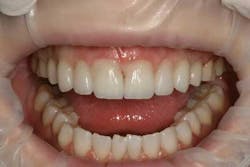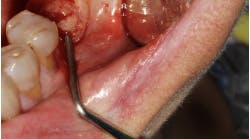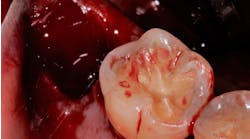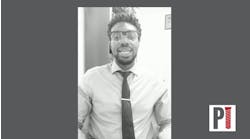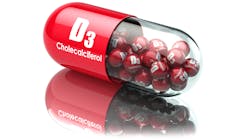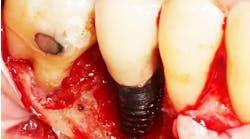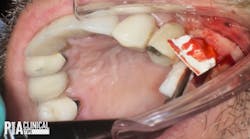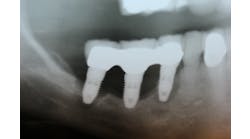By Anthony J. Reganato, DDS, MS When it comes to our clinical approaches in implant dentistry regarding immediate placement vs. delayed placement vs. site development, I try to relate it to one of my favorite sports, hockey. “It doesn’t matter if you score from the sweetest one-timer slapshot or from grinding in front of the net ... a goal is a goal ... a tooth is a tooth ... as long as our patients are winning, WE CAN’T LOSE.” All approaches should get us to the same end point with three main goals in mind: esthetics, function, and longevity. We all have our own guidelines for esthetics, we all have our guidelines for function, but there are no guidelines for creating longevity. For me, longevity is the summation of confidence in implant stability, position, and angulation ... comfort level with the technique or approach employed ... and a cornucopia of bone.Site development is at the core of my surgical technique, and minimally invasive ridge augmentations are just one of the ways I achieve confidence and a level of comfort in my implant placement. So let’s get to how we create our cornucopia of bone …The foundation for a minimally invasive ridge augmentation revolves around sound surgical technique, which I will describe as follows: 1. Profound anesthesia and hemostasis in the working field for patient comfort and optimal visibility.
Preop view demonstrating “hourglass” ridge morphology2. Para-crestal incision offset to the lingual/palatal with reflection of full mucoperiosteal flaps at the site of augmentation.
Flap reflection yielding 3 mm crestal bone width at edentulous site3. Manicuring of the site in order to eliminate tissue tags and remnants.
4. Periosteal release of the buccal flap around or below the MGJ using a single scalpel incision. An orban knife may be used to check the release. A Periosteal elevator may be used to tent outward the buccal flap in order to evaluate the extent of the release.5. Preparation of bone grafting materials and modification of a membrane to be received at the surgical site.6. Decortication of the buccal cortical bone plate using a high-speed handpiece and round bur. The decortications scheme is nonspecific as long as bleeding points are elicited from the recipient site.
Buccal decortication scheme 7. Placement of the membrane on the inside of the buccal flap before grafting material are introduced into the area.
8. Molding and shaping of the bone graft material at the surgical site in order to conform to the intended outcome.
8. Molding and shaping of the bone graft material at the surgical site in order to conform to the intended outcome.
Membrane placement inside buccal flap followed by grafting of edentulous site with FDBA
9. Membrane stabilization by means of suturing to the lingual/palatal flap.10. Primary closure of the surgical site when a resorbable membrane has been employed.
9. Membrane stabilization by means of suturing to the lingual/palatal flap.10. Primary closure of the surgical site when a resorbable membrane has been employed.
Primary closure performed using Vicryl suture in a horizontal mattress and continuous interlocking fashion
Two-week postop presentation
One-month postop presentation
Three-month re-entry surgical appointment for implant placement
Flap reflection yielding almost 10 mm of crestal bone width
Ample bone volume resulting in implant placement in the ideal prosthetic positionsSo now the cat is out of the bag ... or is it? Actually, variations of this technique are abundant and commonly used in routine clinical care. The technique that I use is tried and true and works best in my hands. There is no magical potion or formula for achieving greater bone volume at the intended implant site. As long as you are confident in your approach and adhere to evidence-based techniques, the possibilities are endless. I wonder how we will be bone grafting a decade or so from now ... 'til then, happy grafting!Author bioAnthony J. Reganato, DDS, MS, is a diplomate of the American Board of Periodontology and a traveling periodontist in the Chicagoland area. As an in-house periodontist for several general practitioners, he strongly believes in the team approach to implant rehabilitation. You may contact him through his Facebook business pages: “Private Surgical Tutor” or “Anthony J Reganato, DDS, PC.”

